Audio-visual display device
Pitallano , et al. A
U.S. patent number D857,007 [Application Number D/614,745] was granted by the patent office on 2019-08-20 for audio-visual display device. This patent grant is currently assigned to Intel Corporation. The grantee listed for this patent is Intel Corporation. Invention is credited to Yen-Ning Chang, Andrew Hooper, Christine Kim, Maria L. Pitallano.
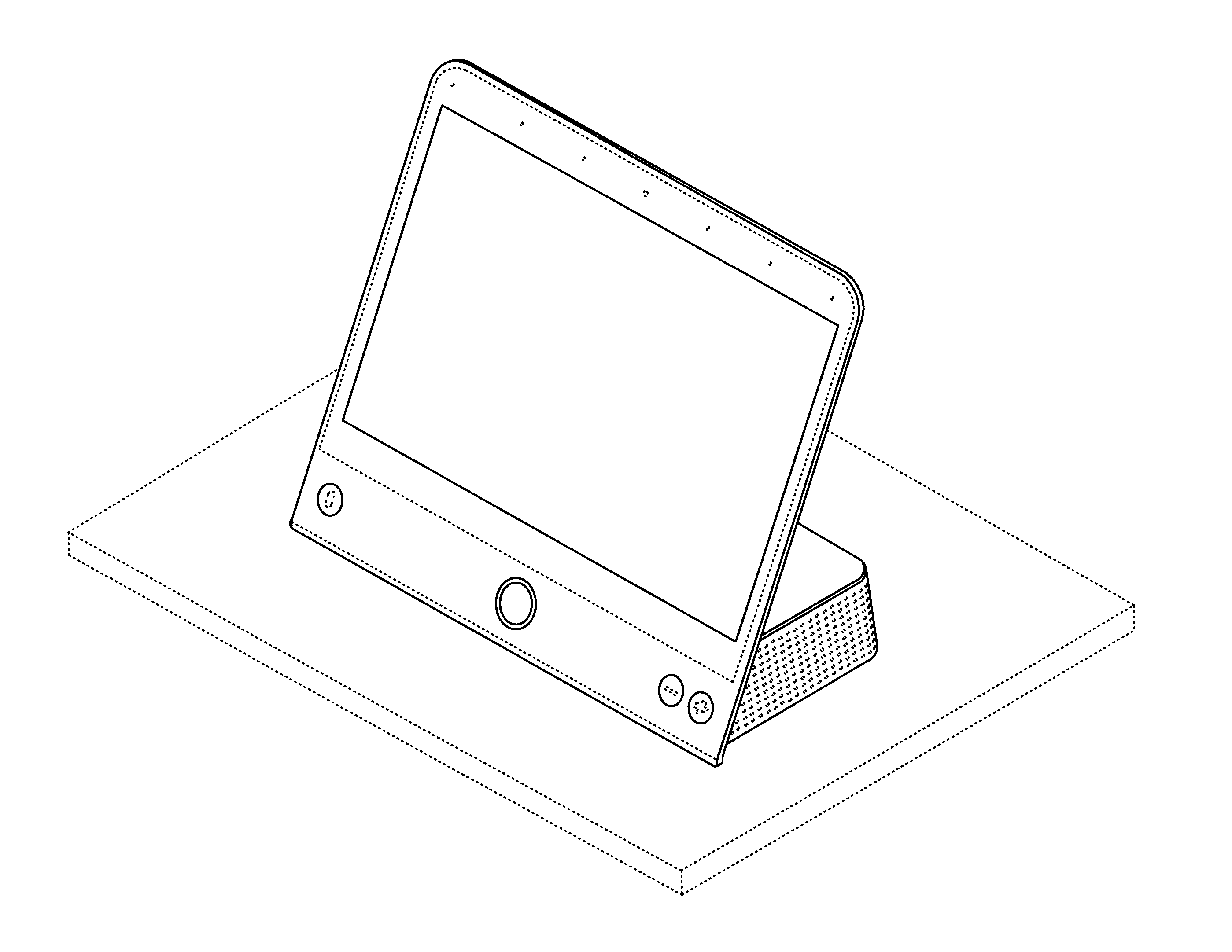
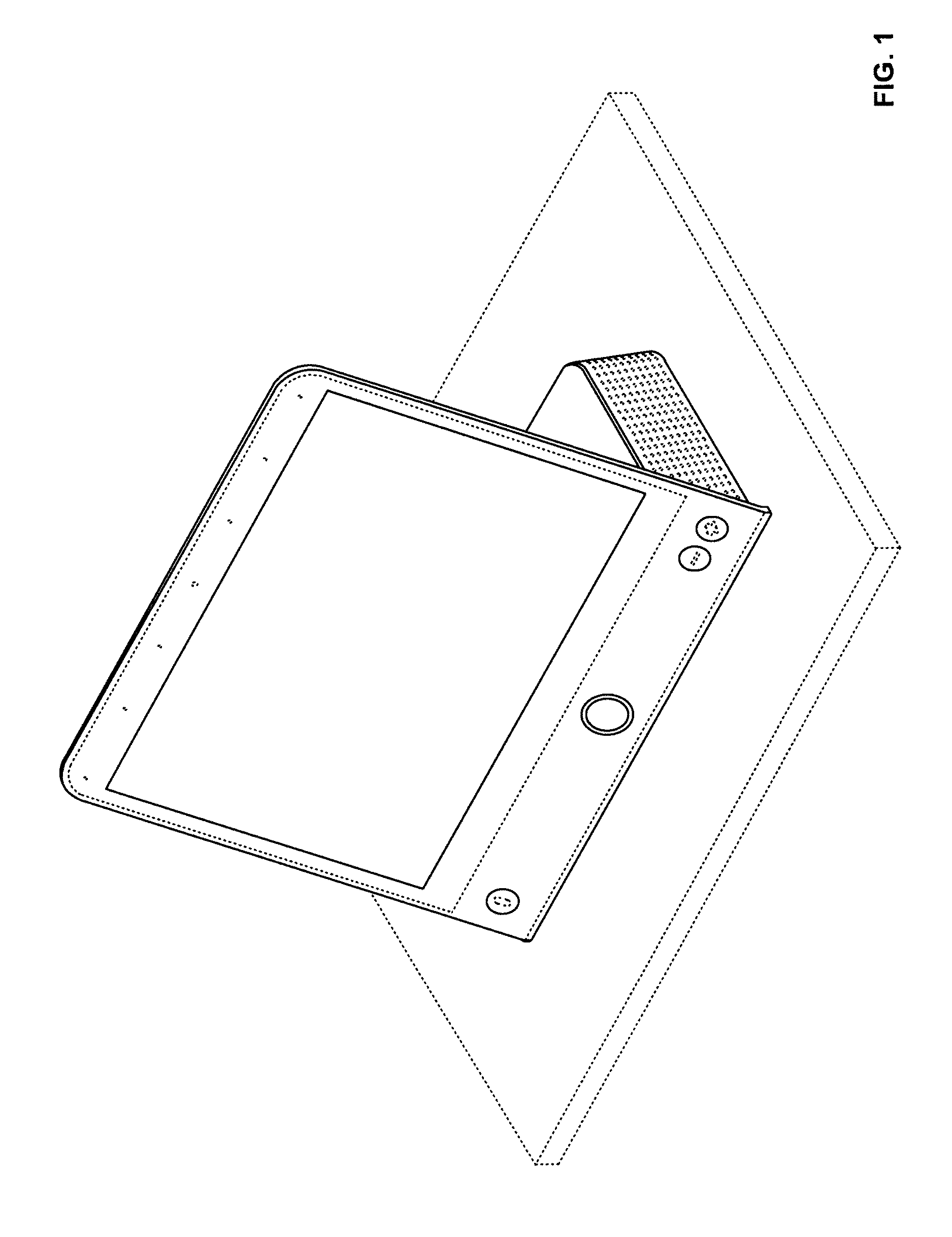

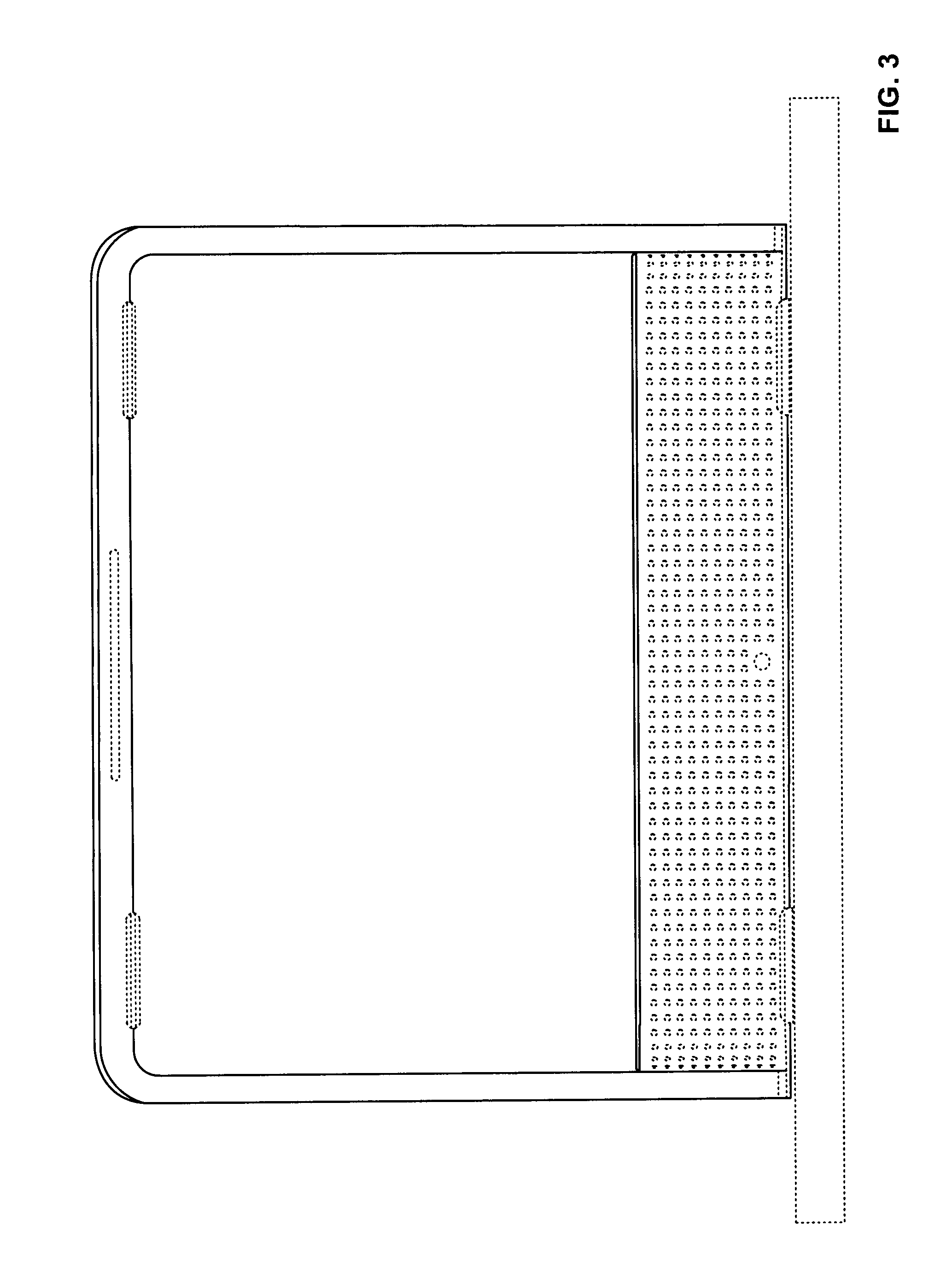




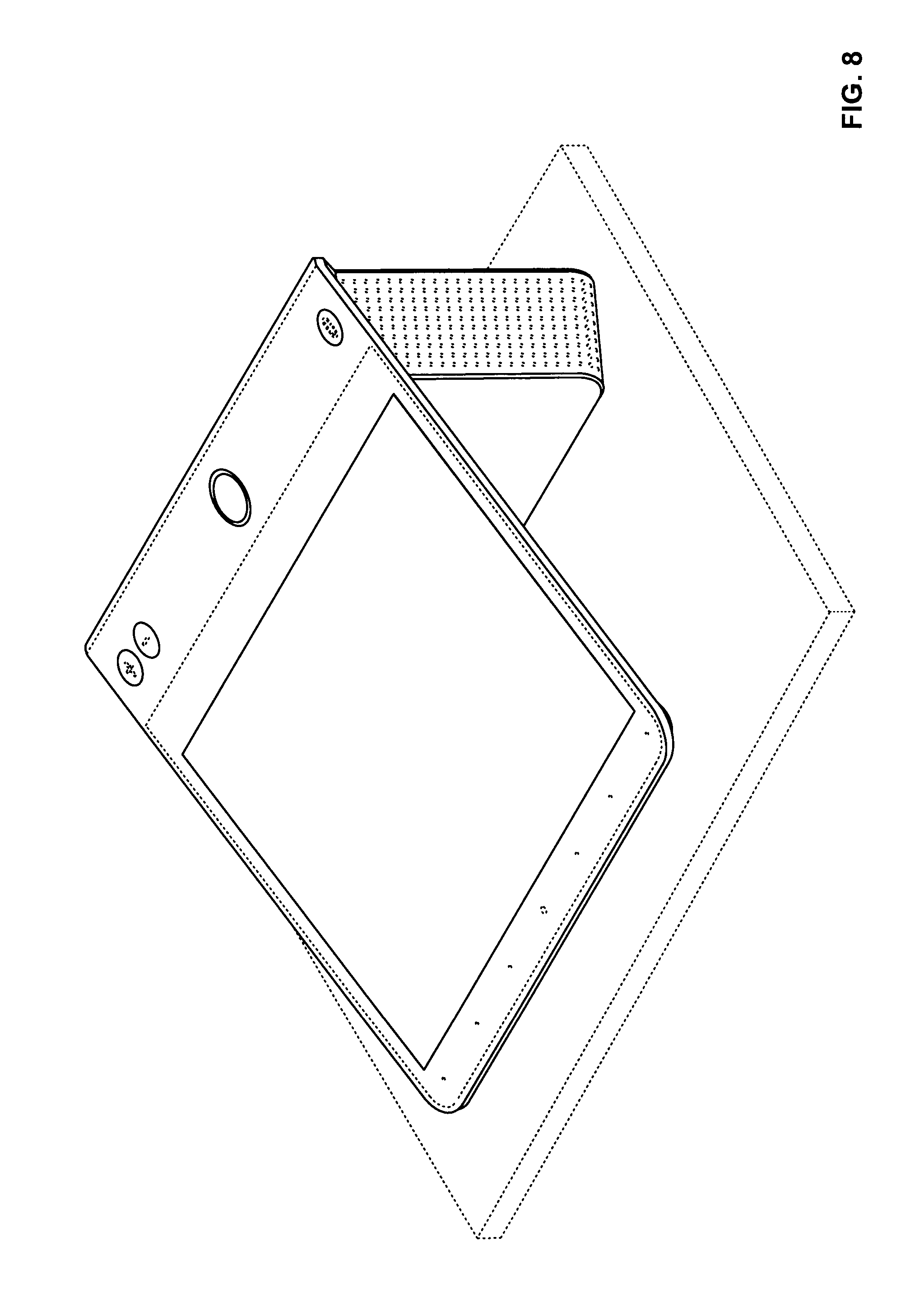

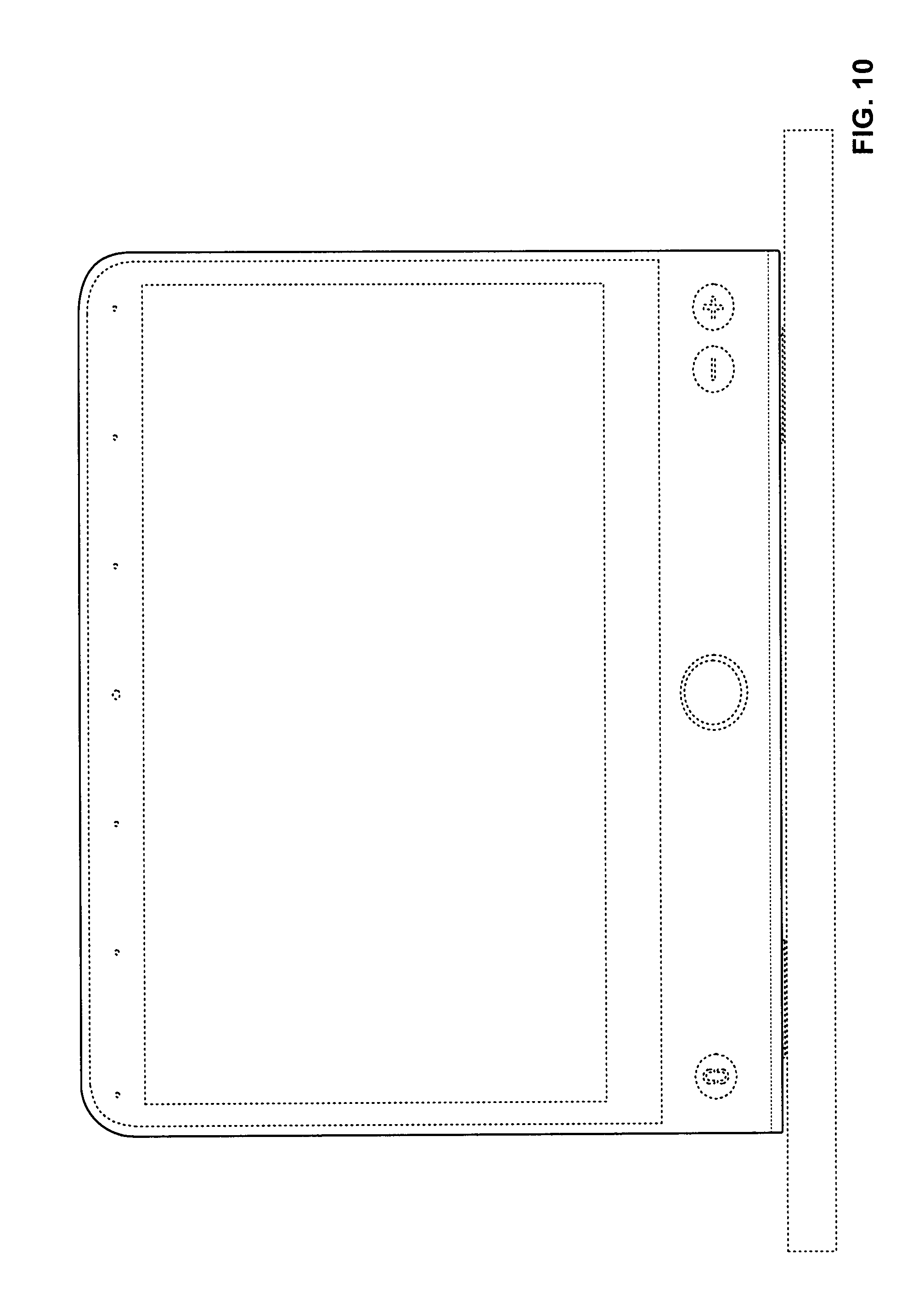

View All Diagrams
| United States Patent | D857,007 |
| Pitallano , et al. | August 20, 2019 |
Audio-visual display device
Claims
CLAIM The ornamental design for an "audio-visual display device," as shown and described in FIGS. 1-24.
| Inventors: | Pitallano; Maria L. (Santa Clara, CA), Kim; Christine (San Jose, CA), Chang; Yen-Ning (Hillsboro, OR), Hooper; Andrew (Santa Clara, CA) | ||||||||||
|---|---|---|---|---|---|---|---|---|---|---|---|
| Applicant: |
|
||||||||||
| Assignee: | Intel Corporation (Santa Clara,
CA) |
||||||||||
| Appl. No.: | D/614,745 | ||||||||||
| Filed: | August 22, 2017 |
| Current U.S. Class: | D14/307 |
| Current International Class: | 1402 |
| Field of Search: | ;D14/302-307,900-902 ;D13/163 ;D20/10 ;D21/332,325,369,370 ;D99/28 ;D6/397,466 ;194/206 ;361/679.01,679.02,679.04,679.21,679.57,725 |
References Cited [Referenced By]
U.S. Patent Documents
| D596173 | July 2009 | Arfin |
| D640252 | June 2011 | Kuroda |
| D646269 | October 2011 | Crick, Jr. |
| D653835 | February 2012 | Strempack |
| D669464 | October 2012 | Birgeoglu |
| D690293 | September 2013 | Wilson |
| D691141 | October 2013 | Cruz |
| D692885 | November 2013 | Cruz |
| D697062 | January 2014 | Nagai |
| D711870 | August 2014 | Johnson |
| D721695 | January 2015 | Birgeoglu |
| D734314 | July 2015 | Swaine |
| D751061 | March 2016 | Berini |
| D762635 | August 2016 | Szeredi |
| D763247 | August 2016 | Yepez |
| D782466 | March 2017 | Yepez |
| D806698 | January 2018 | Thompson |
| D816077 | April 2018 | Benic |
| D824895 | August 2018 | Tivnon |
| D829704 | October 2018 | Oross |
| D831639 | October 2018 | Terry |
| D842296 | March 2019 | Oross |
Attorney, Agent or Firm: Hanley, Flight and Zimmerman, LLC
Description
FIG. 1 is a right, front perspective view of an audio-visual display device located on a surface in a first, upright orientation relative to the surface.
FIG. 2 is a front view of the device of FIG. 1 shown in the first, upright orientation on the surface of FIG. 1.
FIG. 3 is a rear view of the device of FIG. 1 shown in the first, upright orientation on the surface of FIG. 1.
FIG. 4 is a top view of the device of FIG. 1.
FIG. 5 is a bottom view of the device of FIG. 1.
FIG. 6 is left side view of the device of FIG. 1 shown in the first, upright orientation on the surface of FIG. 1.
FIG. 7 is a right side view of the device of FIG. 1 shown in the first, upright orientation on the surface of FIG. 1.
FIG. 8 is a right, front perspective view the device of FIG. 1 in a second, prone orientation relative to the surface of FIG. 1.
FIG. 9 is a right, front perspective view of an audio-visual display device located on a surface in a first, upright orientation relative to the surface.
FIG. 10 is a front view of the device of FIG. 9 shown in the first, upright orientation on the surface of FIG. 9.
FIG. 11 is a rear view of the device of FIG. 9 shown in the first, upright orientation on the surface of FIG. 9.
FIG. 12 is a top view of the device of FIG. 9.
FIG. 13 is a bottom view of the device of FIG. 9.
FIG. 14 is left side view of the device of FIG. 9 shown in the first, upright orientation on the surface of FIG. 9.
FIG. 15 is a right side view of the device of FIG. 9 shown in the first, upright orientation on the surface of FIG. 9.
FIG. 16 is a right, front perspective view the device of FIG. 9 in a second, prone orientation relative to the surface of FIG. 9.
FIG. 17 is a right, front perspective view of an audio-visual display device located on a surface in a first, upright orientation relative to the surface. The cross-hatching denotes color contrast. In one example, the cross-hatching represents the color black and the surrounding color is gray. Any two colors may be used.
FIG. 18 is a front view of the device of FIG. 17 shown in the first, upright orientation on the surface of FIG. 17. The cross-hatching denotes color contrast. In one example, the cross-hatching represents the color black and the surrounding color is gray. Any two colors may be used.
FIG. 19 is a rear view of the device of FIG. 17 shown in the first, upright orientation on the surface of FIG. 17.
FIG. 20 is a top view of the device of FIG. 17. The cross-hatching denotes color contrast. In one example, the cross-hatching represents the color black and the surrounding color is gray. Any two colors may be used.
FIG. 21 is a bottom view of the device of FIG. 17.
FIG. 22 is left side view of the device of FIG. 17 shown in the first, upright orientation on the surface of FIG. 17.
FIG. 23 is a right side view of the device of FIG. 17 shown in the first, upright orientation on the surface of FIG. 17; and,
FIG. 24 is a right, front perspective view the device of FIG. 17 in a second, prone orientation relative to the surface of FIG. 17. The cross-hatching denotes color contrast. In one example, the cross-hatching represents the color black and the surrounding color is gray. Any two colors may be used.
The features shown in broken lines form no part of the claimed design.
* * * * *
D00000

D00001

D00002

D00003

D00004

D00005

D00006

D00007

D00008

D00009

D00010

D00011

D00012
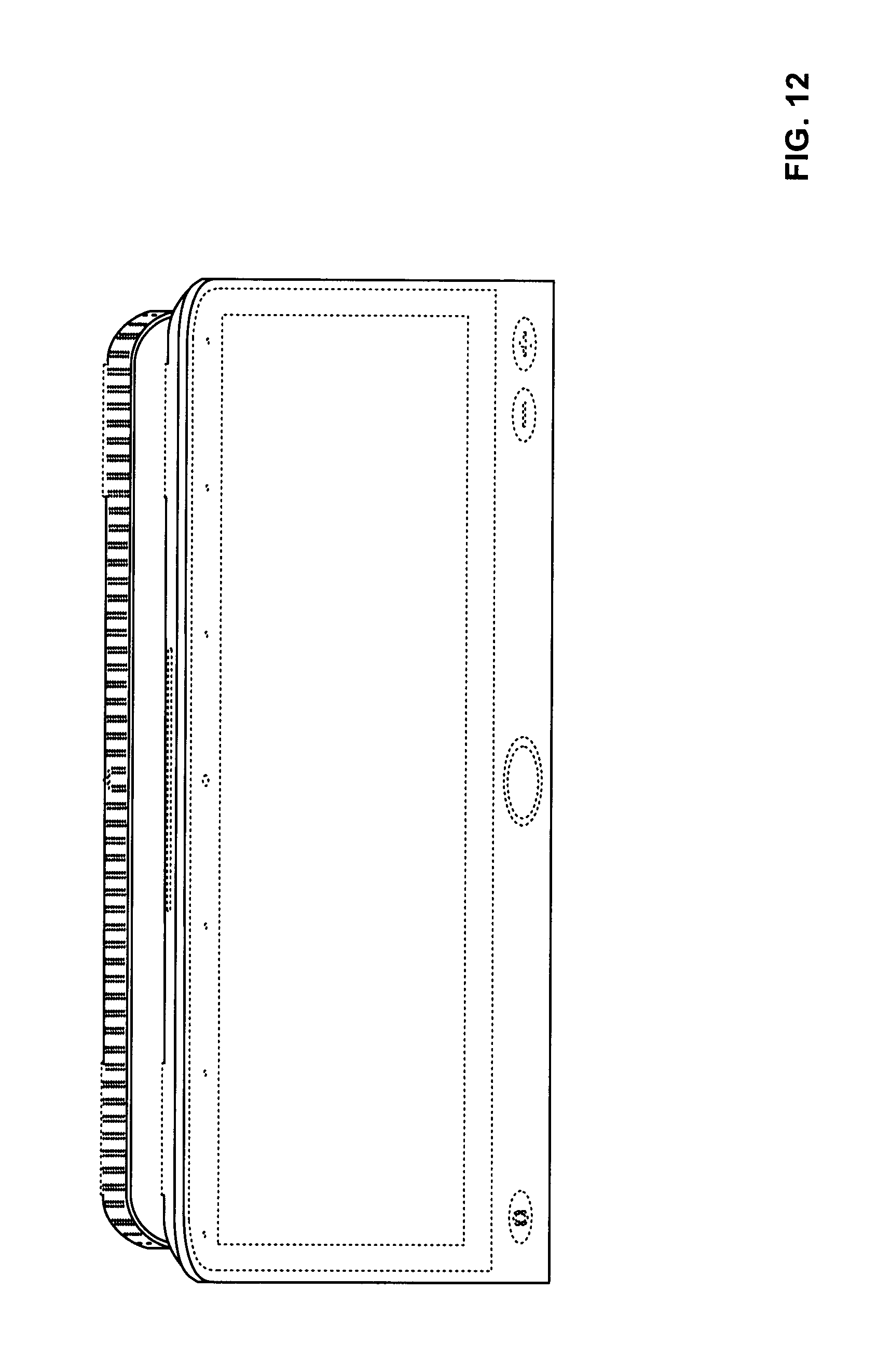
D00013

D00014
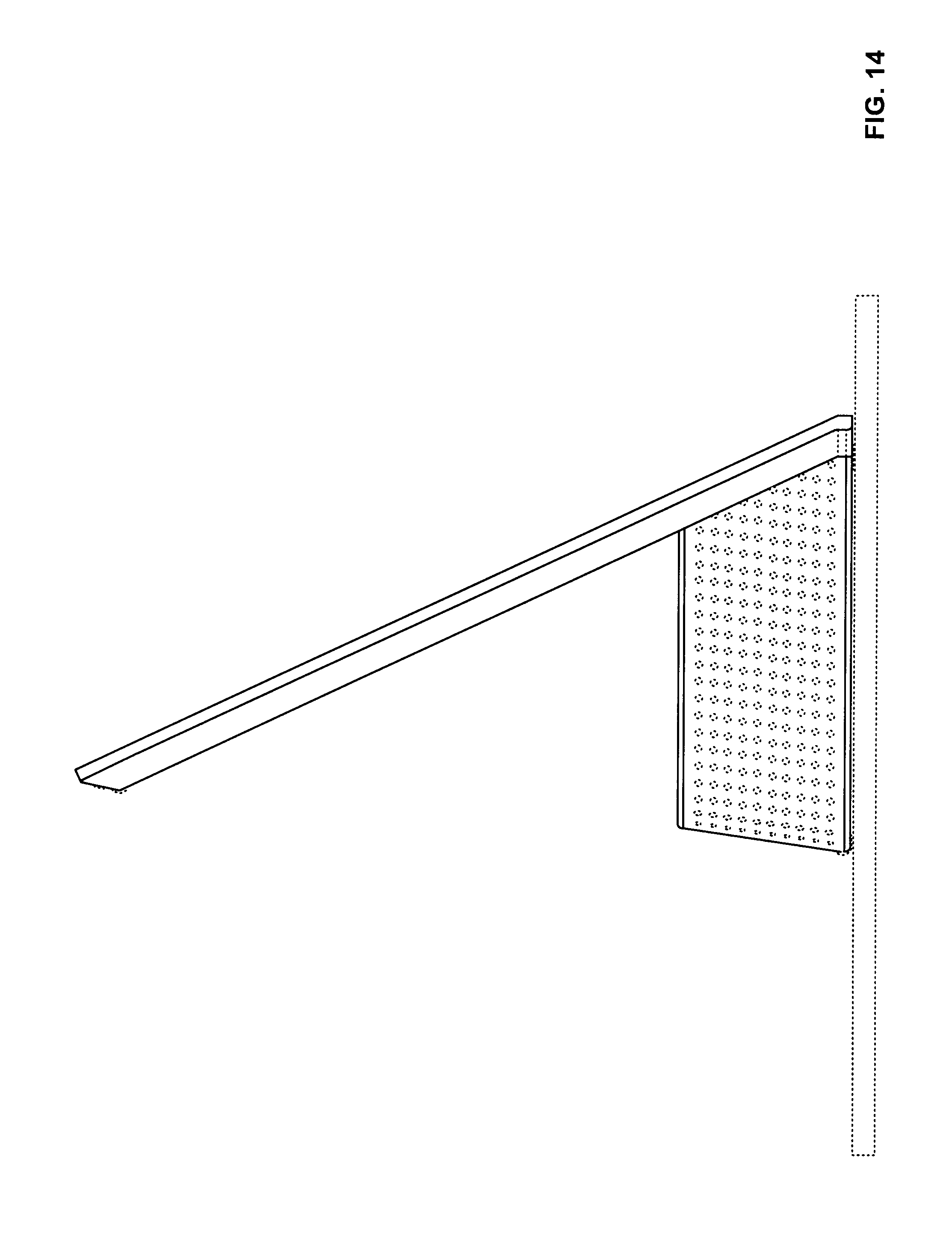
D00015

D00016

D00017

D00018

D00019

D00020
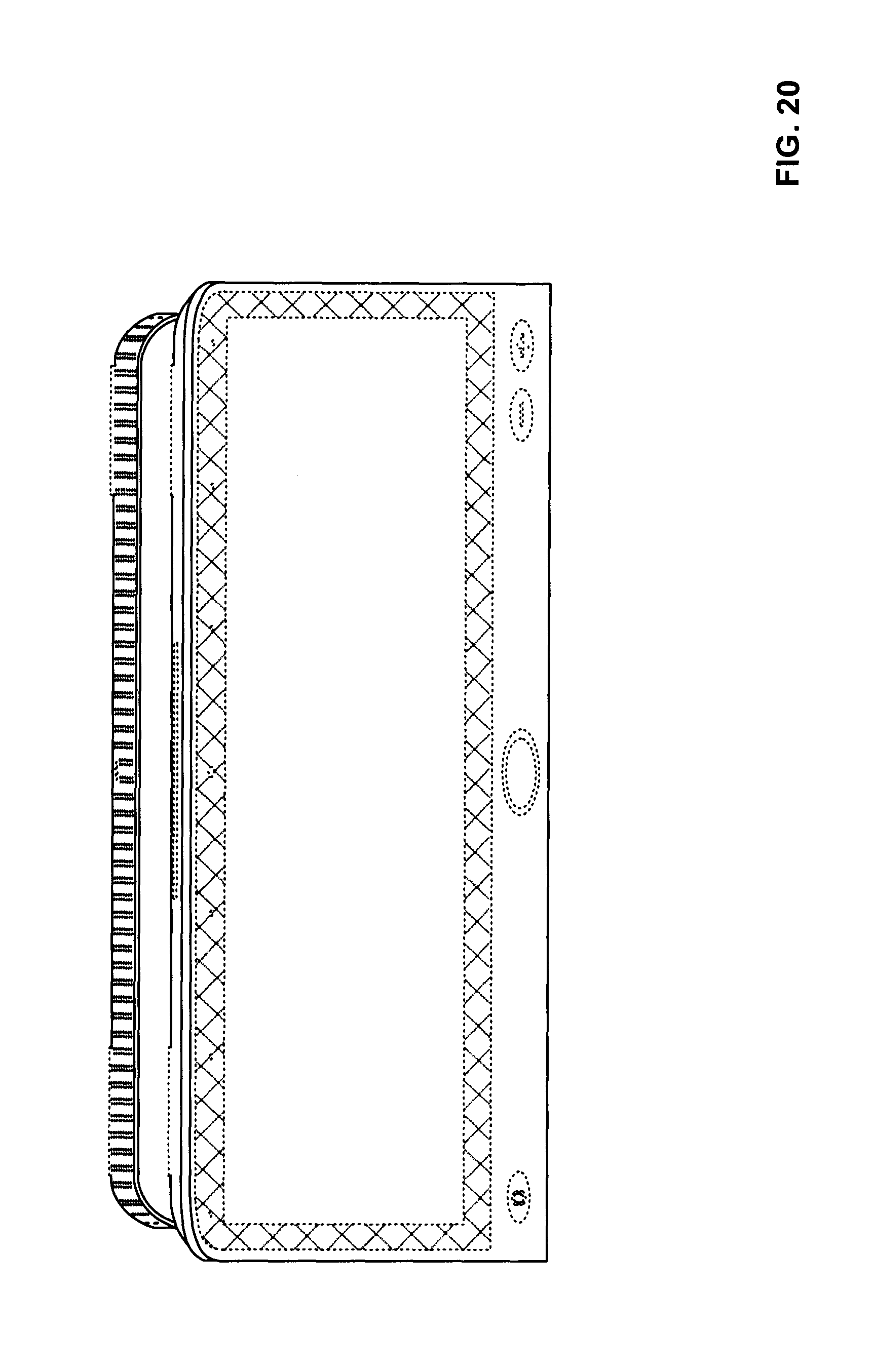
D00021

D00022

D00023
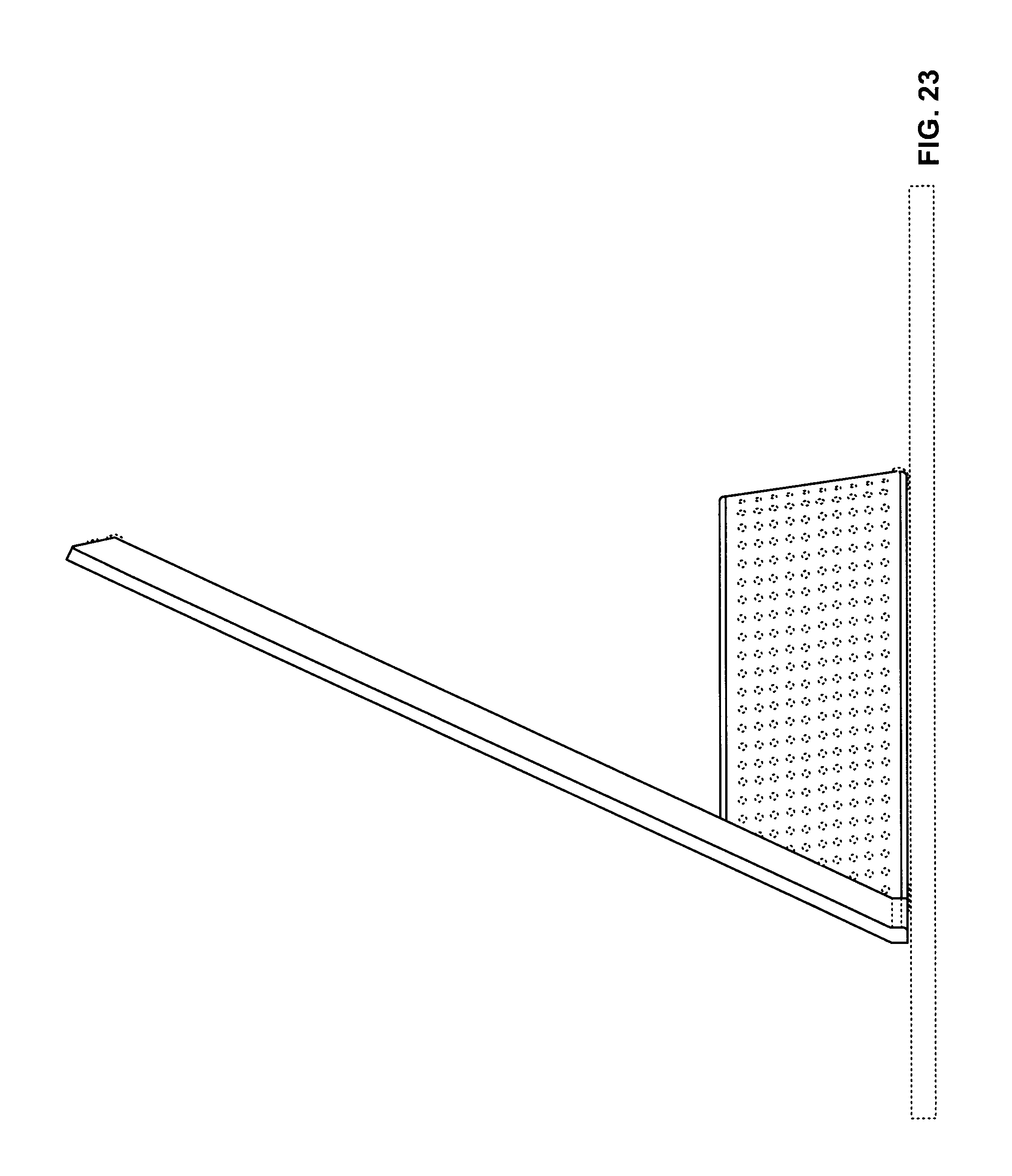
D00024

XML
uspto.report is an independent third-party trademark research tool that is not affiliated, endorsed, or sponsored by the United States Patent and Trademark Office (USPTO) or any other governmental organization. The information provided by uspto.report is based on publicly available data at the time of writing and is intended for informational purposes only.
While we strive to provide accurate and up-to-date information, we do not guarantee the accuracy, completeness, reliability, or suitability of the information displayed on this site. The use of this site is at your own risk. Any reliance you place on such information is therefore strictly at your own risk.
All official trademark data, including owner information, should be verified by visiting the official USPTO website at www.uspto.gov. This site is not intended to replace professional legal advice and should not be used as a substitute for consulting with a legal professional who is knowledgeable about trademark law.